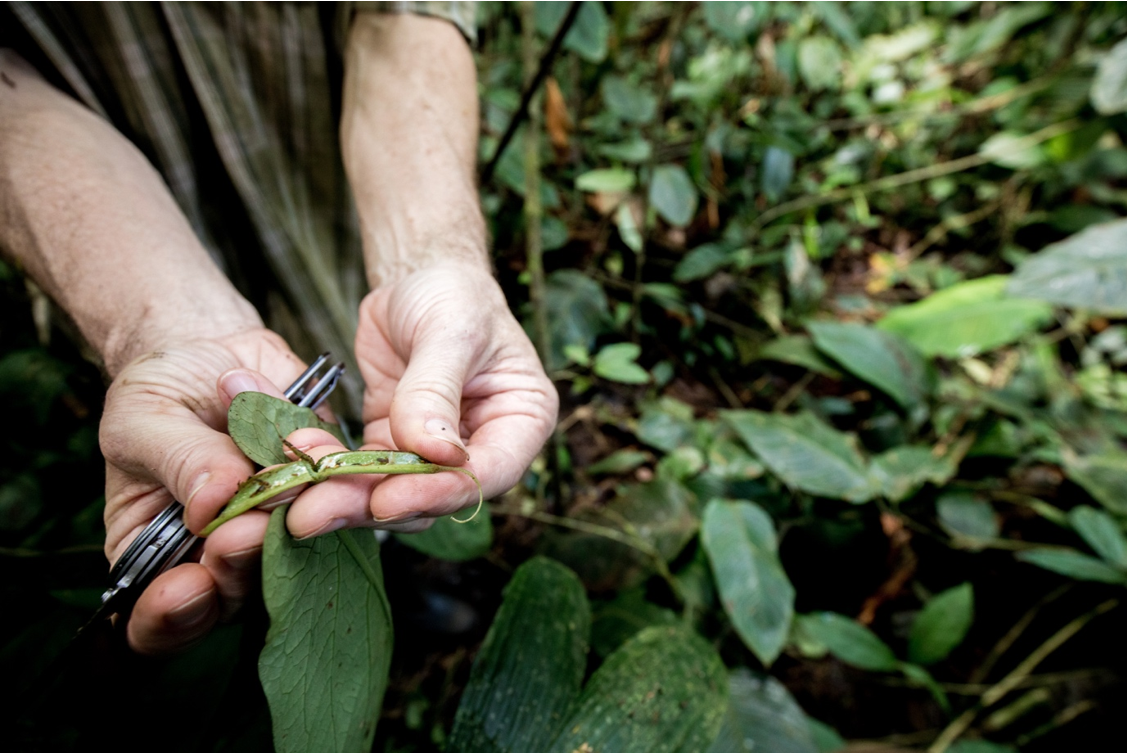- A new study in Scientific Reports suggests declines in caterpillar richness in a protected Costa Rican tropical rainforest, as well as in the parasite species that live off them.
- Researchers examined data from 1997 to 2018 to identify long-term patterns of extreme weather events and the impact these have on insect diversity.
- More than 40% of the 64 common caterpillar genera decreased, suggesting the decline of entire groups of caterpillars.
Scientists have uncovered alarming declines in caterpillar diversity and their parasites across 22 years of monitoring in a protected forest in Costa Rica. In their study, published in Scientific Reports, they also reveal a clear link between extreme weather events and insect declines, with potential implications for ecosystem function.
Scientists studied the Lepidoptera order of moths and butterflies by collecting all externally feeding caterpillars — those found on leaves and not the inner tissue of a plant. They also collected the parasites that live off their caterpillar hosts, known as parasitoids, including wasps (order Hymenoptera) and flies (order Diptera).
Parasitoids require a host for development, eventually leading to their host’s death. Many parasites are extremely specialized, meaning they only parasitize certain host species.
The researchers’ findings suggest the loss of entire groups of dominant caterpillar genera. More than 40% of the 64 common caterpillar groups collected were found to be in decline. A direct consequence of these declines are reductions in parasitism: the researchers expect a 30% drop in parasitism over the next century. The findings raise concerns about declining ecosystem services such as biocontrol, a method of relying on parasitoids to keep agricultural pests such as herbivorous insects in check.
“This is really important because it’s interactions between species, not just high numbers of species, that are critical to keeping ecosystems healthy, stable and delivering ecosystem services,” says Manu Saunders, a research fellow and ecologist at the University of New England, who was not involved in the study.
Scientists conducted the study at La Selva, a biological research station on a 1,600-hectare (4,000-acre) patch of isolated forest on the Caribbean slope of Costa Rica’s Cordillera Central range, bordered by plantations responsible for global exports of banana, pineapple, and palm oil.
Scientists say the declines are partly explained by climate change. While many studies examine the impacts of rising temperatures, here researchers investigated other features: specifically, rainfall in lowland tropical communities. They found that extreme weather was the most important factor associated with diversity declines, particularly heavy rainfall combined with rising temperatures.
“La Selva, in many ways mirrors many lowland tropical forests: vulnerable to increases in temperature and flooding events, increased agricultural intensification, and marginalised protected areas,” says study lead author Danielle Salcido, a Ph.D. student at the University of Nevada, Reno. Even protected areas “are not immune to climate change or the land-use changes occurring immediately adjacent.”

Flooding and other extreme weather events can dramatically reduce insect populations: an event that lasts a couple of days has the potential to wipe out entire groups of caterpillars or parasitoids. This can impact populations for months, and even years after, in a phenomenon known as a time lag: floods one year can affect parasitism in the subsequent one. And because some interactions like that of a caterpillar host and its parasitoid are tightly synched and specialized, these time lag weather events can lead to a decoupling of the pair.
“For a parasitoid, decoupling with its host would lead to loss of parasitoid abundance and eventually diversity, particularly for specialised parasitoids that have only one host species,” Salcido says. “If a caterpillar population is no longer controlled this can lead to outbreaks.”

The team’s statistical analysis found that time lags had the strongest effect on declines in parasitism and species richness overall, something Saunders says she found “most interesting about this study.”
“This means that, while climate factors were also influencing the measured changes in insect populations to some degree, other factors that weren’t measured in the study were also having a strong effect,” she says.
The findings suggest that climate change isn’t the only factor, and that there’s still much to investigate.
“This is a critical point: ecosystems are affected by lots of different drivers, as well as interactions between those drivers, and we will never be able to pinpoint a single factor that is causing biodiversity declines and losses everywhere,” Saunders says.
Stopping declines and restoring ecosystem health will take strong political will. Salcido says voters need to make better choices, ensuring that elected officials take climate change seriously and make international efforts to curb carbon emissions. There also needs to be more support for research and international collaboration in tropical ecology, involving local and international communities in long-term data collection, she says. She also calls for harnessing the power of citizen scientists and encouraging a sense of environmental advocacy and training.
“To bring about large-scale change, we need local (i.e. grassroot) movements to promote top-down policy change,” Salcido says. “This means promoting and demanding collective and synchronous policy. We need to continue to hold governments and industry accountable and keep this matter ever present in the minds of the public.”
Banner image: An Apatelodidae caterpillar on a host plant. This image was created in a studio where other collected species where photographed eating from host plants. Image by Danielle Salcido.
Citation:
Salcido, D. M., Forister, M. L., Garcia Lopez, H., & Dyer, L. A. (2020). Loss of dominant caterpillar genera in a protected tropical forest. Scientific Reports, 10(422). doi:10.1038/s41598-019-57226-9
